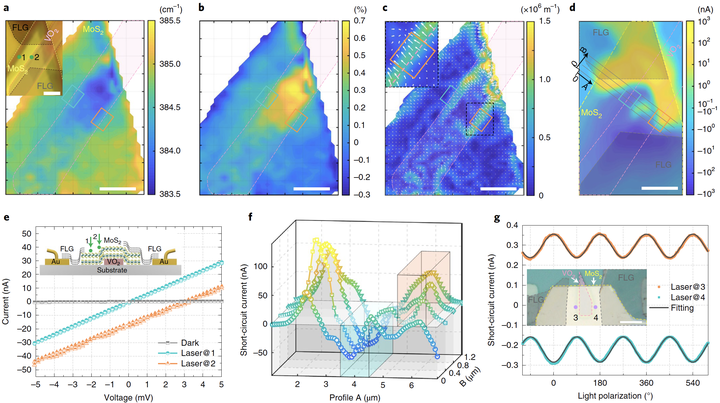
Abstract
The theoretical Shockley–Queisser limit of photon–electricity conversion in a conventional p–n junction could be potentially overcome by the bulk photovoltaic effect that uniquely occurs in non-centrosymmetric materials. Using strain-gradient engineering, the flexo-photovoltaic effect, that is, the strain-gradient-induced bulk photovoltaic effect, can be activated in centrosymmetric semiconductors, considerably expanding material choices for future sensing and energy applications. Here we report an experimental demonstration of the flexo-photovoltaic effect in an archetypal two-dimensional material, MoS2, by using a strain-gradient engineering approach based on the structural inhomogeneity and phase transition of a hybrid system consisting of MoS2 and VO2. The experimental bulk photovoltaic coefficient in MoS2 is orders of magnitude higher than that in most non-centrosymmetric materials. Our findings unveil the fundamental relation between the flexo-photovoltaic effect and a strain gradient in low-dimensional materials, which could potentially inspire the exploration of new optoelectronic phenomena in strain-gradient-engineered materials.